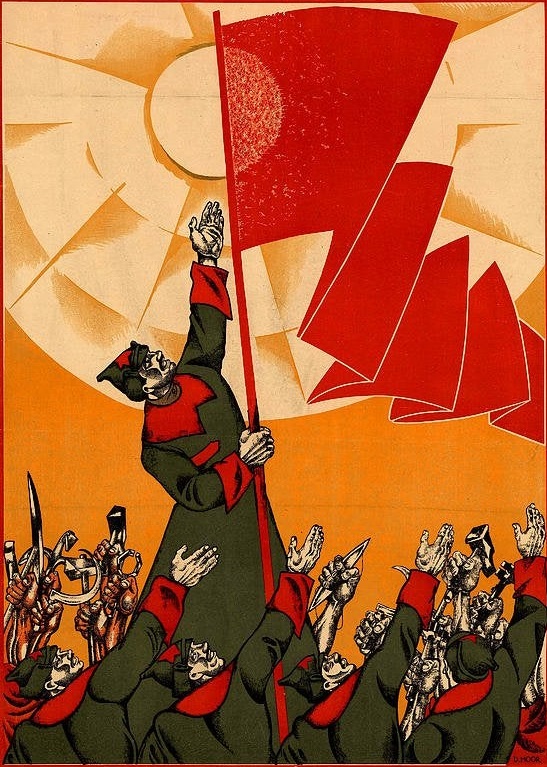It’s surprising that pagan religions of Europe have disappeared, but polytheistic religions of Asia (especially India) survived and are still widely followed there. Why?
It’s because Christianity incorporated a lot of pagan rituals into Christianity and some pagan gods became catholic saints.
Also there are less know crusades against pagans.
I was gonna say also because paganism was heresy and would get you tortured to death?
And then they started the murdering.
The crusades targeted all religions that weren’t nicene christian and they were especially cruel if you were christian but not nicene.
Lookup the history behind the Dominican order if you want more gory details
Roman empire prosecuted Pagans in later eras in same way they prosecuted Christians in earlier eras. All countries in the Roman empire were dominantly Christian.
Asians were not part of Roman empire neither did Arab for that matter so they maintained paganism until eventually Islam eliminated it from Arab region and so only Asia survived
The fucking inquisiton
No no, not the comfy chair!
Besides the other reasons mentioned here, i think there is a strong factor in the social and intellectual sphere. Christianity was a cohesive standardized institution with a written holy book (or set of texts, before the council where they canonized which books would go to the bible), and later became a part of enforced state policy. That mixture of standardization and officialdom allowed it to essentially accumulate ‘capital’ to such a degree it could (after absorbing lots of ideas and practices) overwhelm the local polytheistic societies and religions.
Local polytheistic religions were extremely varied, and each village tribe or city had its own gods, beliefs, etc. The mess of beliefs meant that the religions spread organically, not in an institution with quasi industrial ways (standardized beliefs, practices, texts, even rows of clergy trained in the same ways on churches and monasteries). They could be challenged and be overwhelmed by the bigger faith, in intellectual ways (evangelization) or by demographic superiority. Or just by immigration to other regions (which many people did, like the barbarians in late Rome or Imperial legions and soldiers since always), where multiple contradictory faiths coexisted, until a cohesive unified alternative popularized.
All that is inverted in India. Hinduism was (is) varied, but way less than paganism from ireland to iran, and it is a formalized institution with written holy texts supported by the state (or by castes, specially the Brahmins), very constant and stable over many generations. That inertia even allowed it to not become muslim majority (except in a few regions).
Other countries in Asia actually have Buddhism as the main religion or state religion (or main historical religion). Even if buddhism absorbs lots of pagan deities, ideas and praxis, the core institution is solid and formalized, and dominant. Japanese Shinto is very different from pre buddhist times. China had buddhism, and confucianism and taoism as also very standardized formalized state institutions (aka not a different religion per village). So asian polytheism is very reduced compared to european one.
deleted by creator
temple that is often visited by Muslims
Sabarimala?
deleted by creator
Since you’re a Malayali, you must know about Bappa Beary, a Muslim trader from Kerala?
I haven’t heard of it. Thank you for sharing information on it.
Regarding Sabarimala, it’s a shrine for Vaavar:
https://en.m.wikipedia.org/wiki/Vavarrefrain from eating meat, wear a black lungi and plan a long-distance pilgrimage to Sabarimala to pay visit to the celibate God Ayyappa
Yep.
No meat, no footwear, no shaving, no swearing, no alcohol or similar material etc. It’s seen positively by many because it helps reduce alcoholism in some of the believers. I had a distant relative who’d be totally different during Mandalakaalam vs other times.I’ve been told that he had a lowly birth, and that Brahmins are trying to appropriate this God too - this information might be incorrect though.
I’ve heard similar things too. That it was a tribal or buddhist diety that has been appropriated
Great information. I made a very general analysis, with the aim of covering the majority of territories and populations, not of exhausting every local specificity. Hinduism is not a uniform religion, as i said, but a very diverse one. But still, there are common traits that unify the vast majority of Indians that makes the situation very different (less diverse) compared to the historical European polytheism. The vast majority of Hindus believe that religious knowledge and rituals must be studied and performed by a specific social group, the brahmin caste. Or will you tell me that a random foreigner or a Dalit can enter any temple in north or south india, study sanskrit and rituals, and start preaching and performing rituals ? Not by a long shot. Hinduism has a diversity of holy texts, but the important aspect is that in each tradition and place there is a good degree of codification and formalization: at least one set of written (fixed) texts that people will adhere for doctrine and rituals, not for instance an exclusively oral tradition that changes radically in each house of worship, over time, and over the next village (old polytheism). This is stuff that only a developed urban civilization makes, that makes a religion have more ‘capital’ so to speak (to spread and be reproduced over time).
The muslim rulers also did not immediately convert everyone to islam in the conquests over persia to north africa, but due to the characteristics of traditional polytheism (along with the conquests and violence), Islam converted and spread over time, including to places christianity had not reached (like interior Egypt). This did not happen with indian religions because of the higher degree of formalisation and codification, that allowed it to at least keep up ideas and rituals with a more equal power degree in syncretisms.
I think a major factor was the Hellenistic age (the spread of Greek culture from the Mediterranean to Central Asia after Alexander the Great) and the “interpretatio graeca”—the practice of the Greeks (and later Romans) of merging their own polytheism with the various other forms of polytheism they encountered in the Hellenistic world. The result was that everyone from the Celts and Germans in western Europe to the Egyptians and Iranian polytheists in the Near East (but not the non-polytheistic Jews or Zoroastrians) could be assimilated into Greco-Roman culture without formally giving up their religions. But a side effect was that all religious institutions were assimilated into the state, so that when the state switched to monotheism there were no independent religious institutions to oppose it.
One factor is that paganism is tolerant of adding additional gods, practices, or beliefs to your mix. From a pagan standpoint, adding in Christianity wasn’t a big deal, but Christianity was not similarly tolerant, they weren’t cool with you keeping your pagan gods. Plus their belief system had the threat of eternal damnation and the promise of heaven to motivate you.
Because christians literally forcibly converted everyone they could, and killed anyone who refused. Also it didnt die completely. Most people just worshipped in secret, and in some more rural areas it survived. Aswell as mixing with the christians culture and influencing them. Like Santa Claus is just Odin. A lot of Jesus’s associations came from Apollo because Apollo was super popular in the roman empire and had lots of temples and when the romans converted them to churches a lot of the preists were like ok well im a preist of apollo thats what i know how to do so ill just keep doing what i always did but say jesus now instead. Laurel wreath on head, frankincense, etc. All Apollo things.
Most holidays trace their roots back pre-christian too. Christmas, Halloween, Easter, all can be traced back to old pagan traditions.
A big part of like christianity in general is converting others. Not all religions are like that most arent actually not even all christian sects are. Its why it spread so far cuz people who follow it actively try to spread it. Even today religious christian groups travel around the world trying to convert people. In areas they colonized they did the same, convert, or die tactics.
Pagan remnants are attested in Poland as late as in XVI century for example. Also compare to christian persecution in Japan, even after over 200 years some secret pockets of christianity still remained and emerged when the antichristian edicts were liquidated during Meiji era. European pagans lasted 600+ but it wasn’t enough.
The Sami people still exist and are pagan today in scandinavia.
Most Sami are either lutheran or orthodox. Their paganism still do exist in minority but it’s because they live on absolute periphery of Europe and while they were never christianised by force by organised state action, even the private effort of Norwegian evangelists almost wiped it out in XVIII century.
Ya theyve been persecuted a lot as an ethnic minority too im just pointing out there are still pagan Samis around today
Christianity
Within the Roman Empire, Christianity ended up succeeding as the apocalypse cult within the empire, with Rome eventually foresaking the old gods for Jesus.
As Roman retreated, Rome’s church survived and became a unifying force in Europe. While there were crusades, there were also cases of willing conversion in order for border nations to gain access to the European market and diplomacy.
tldr: Pagan Mongol tribes
I theorize: Nomadic mongol tribes (horsemen who used bow and arrow to hunt 🏇🏹) converted quite quickly to the religion of the people they conquered. But the Mongols where mostly pagan shamanistic tribes in the beginning (they believed in the Sky god Tengri) and transferred some of their culture into ruling elites of their subject countries and killed many monotheistic farmers people greatly altering east asian and central asian demographics at a scale of 40.000.000 people 💀. Also the Mongol conquests acted as a buffer that kept Islam or Orthodox Christianity spreading beyond central asia into east asia for 500 years:
- Mongol tribes captured Moscow and beyond, preventing orthodox Christianity to expand to China faster
- Mongol empire captured the Chinese capital Beijing. Maybe their shamanistic believes influenced locals.
- Timurid (emperor Timur was grandson of Mongol Ghengis Khan) empire only expanded west not to China by their luck. They defeated mostly muslim empires like Persians and Ottomans. This prevented larger muslim expansion into east Asia. Even Europeans viewed the muslim timurids as a great threat, but also as a ally against Persian and Ottoman empires.
- The siege of Baghdad in the year 1258 by the Mongol empire with Chinese siege-craft destroyed the Muslim “golden age” destroying a chance of their expansion to east asia
Additional theory: Shamanistic Mongol tribe invasions might have deeply altered the subconscious of the religious people they annexed in central Asia/Eastern russia and Persia, what is known that they replaced the ruling elites and subtly influenced hierarchy to make taxation easier.





